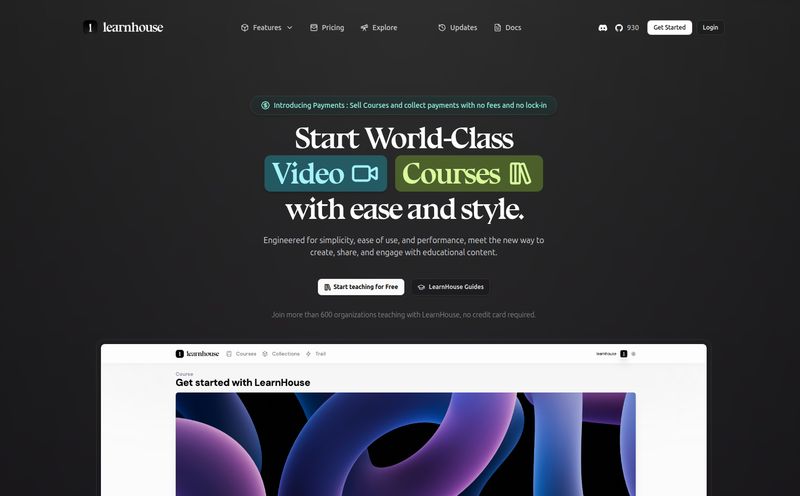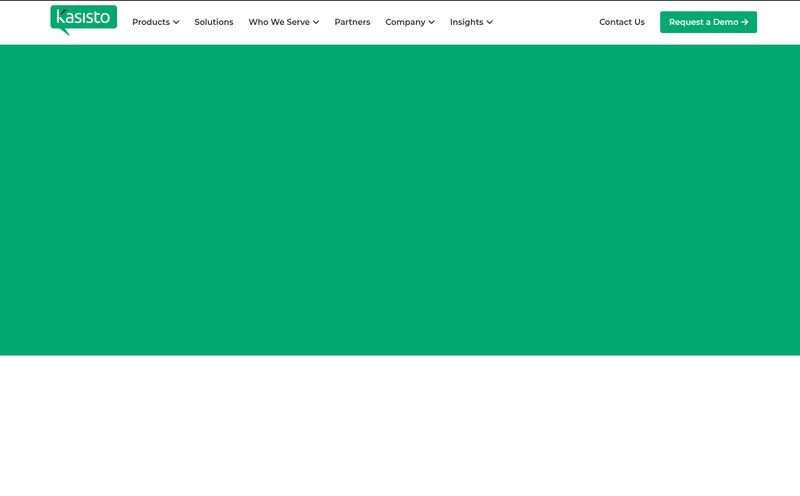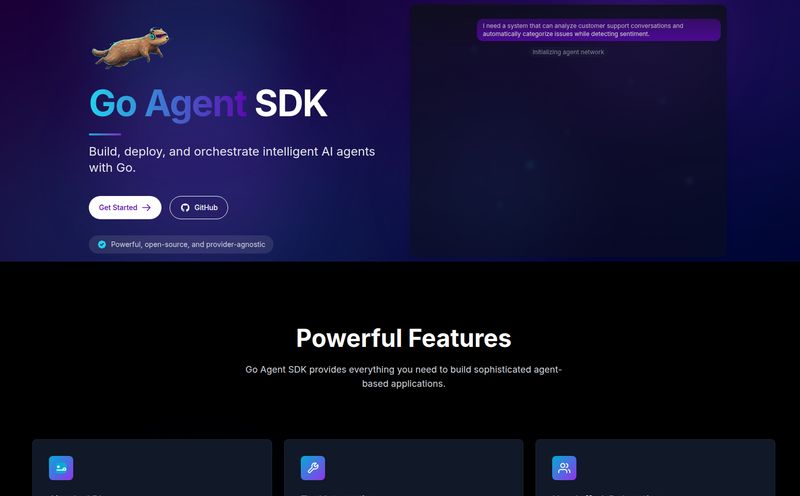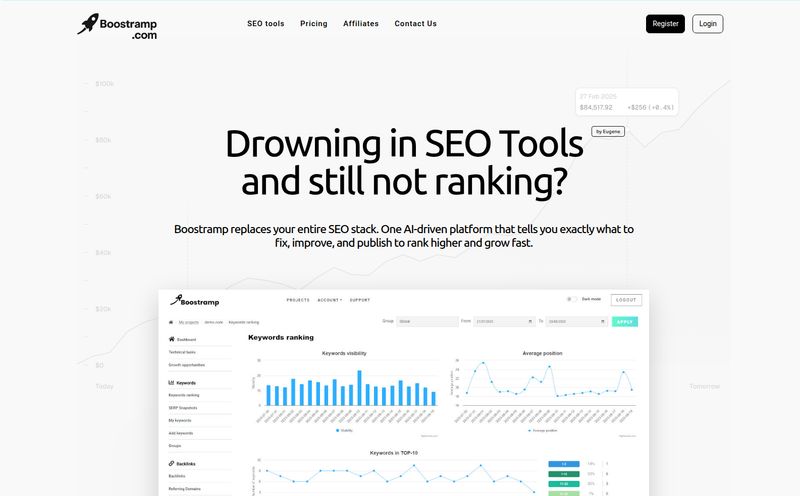If you've spent any real time in the trenches of Google Ads, you know the feeling. It's that 10 PM check-in, just to make sure a campaign hasn't decided to spontaneously combust and burn through your client's budget. Or that Sunday morning scramble to pull a report because an idea struck you in the shower. The world of PPC is a relentless, 24/7 beast, and for years, we've just accepted that as the cost of doing business.
We've built agencies, trained teams, and developed complex spreadsheets that would make an astronaut's eyes water. All in the name of taming Google's ever-shifting algorithm. So when another “AI solution” pops up on my radar, my first reaction is usually a healthy dose of skepticism. We've seen a lot of tools promise the world and deliver, well, a slightly shinier dashboard.
But then I stumbled upon a tool called Parallel AI. And the pitch wasn't about replacing the PPC manager. It was about giving them a co-pilot. That caught my attention. It’s not about handing over the keys; it’s about having a brilliant navigator in the passenger seat. So, is this the real deal? Let's get into it.
What on Earth is Parallel AI?
At its heart, Parallel AI bills itself as an AI-powered Google Ads co-pilot. Think of it less as a self-driving car and more like an incredibly advanced cruise control system with a built-in navigator who’s also a data scientist. It integrates with your Google Ads account and gives you an intelligent layer—mostly through a chat interface—to manage, analyze, and optimize your campaigns.
The whole idea is to slash the time you spend on the repetitive, soul-crushing tasks of campaign management. We're talking budget pacing, performance reporting, and even initial copy creation. The platform claims it can handle these things up to 99% faster than a human team. A bold claim, but one that makes any agency owner or in-house manager sit up and listen.
The Core Features That Actually Matter
A feature list is just a list until you see how it applies to the daily grind. Here’s what stood out to me from a practitioner's point of view.
The Intelligent Chat and Co-Pilot Mode
This is the main event. Instead of clicking through ten screens in the Google Ads interface to check your top-performing ad group's CPA, you can just… ask. “What’s the CPA for the ‘Spring Sale - Broad Match’ campaign this month?” or “Draft three new headlines for my ad group targeting ‘eco-friendly dog toys’.” It's a fundamentally different way of interacting with your data. It feels less like operating a machine and more like collaborating with a (very logical) team member.

Visit Parallel AI
Automated Campaign Housekeeping
Here's where the real time-saving comes in. Parallel AI offers co-pilot modes for bid strategies and budgets. I remember a campaign for an ecom client that went haywire overnight because someone on the team forgot to cap the daily budget on an experimental campaign. It happens. It’s a costly, embarrassing human error. The promise here is a system that watches your budget pacing 24/7, making sure you don't overspend and flagging anomalies before they become disasters. It’s a safety net that never sleeps or takes a vacation. That alone is pretty compelling.
From Raw Data to Actual Insights
Let's be honest, Google Ads gives you more data than any sane person knows what to do with. The challenge isn’t getting data; it’s getting insights. Parallel AI's chat can provide market insights and performance reporting that isn't just a data dump. You can ask it to summarize performance, identify trends, or even do some online research to see what competitors might be up to. It turns your account from a library of numbers into a source of strategic direction.
The Good, The Bad, and The AI
No tool is perfect. Let's get real about the pros and the potential snags. The biggest win is obvious: speed and efficiency. Freeing up your sharpest minds from the drudgery of pulling reports and tweaking budgets means they can focus on high-level strategy, client relationships, and creative thinking—the stuff humans are actually good at.
The cost savings are also a huge talking point. Hiring a junior PPC specialist is expensive, and training them takes months. A tool like this, even at the higher tiers, can represent a massive reduction in overhead. And the promise of zero human error on routine tasks is… well, it’s the dream, isn’t it?
However, let’s not get carried away. The initial setup requires integration with your Google Ads accounts, which can be a hurdle for less technical teams. And there’s the big one: trust. Handing over aspects of campaign control to an AI can feel like a loss of control. It requires a mental shift from being a hands-on-the-wheel driver to being a pilot who trusts their instruments. For some old-school marketers, that's a tough pill to swallow. There’s a learning curve, not just for the software, but for the philosophy of management itself.
How Much Does This AI Co-Pilot Cost?
Alright, the all-important question: what’s the damage? Parallel AI has a tiered structure that’s pretty clearly aimed at different types of users. I’ve broken it down into a simple table.
| Plan | Price | Best For | Key Limits |
|---|---|---|---|
| Professional | $297 / month | Solo pros & small businesses | Up to 5 Google Ads accounts, $50k/mo ad spend |
| Performance | $997 / month | Mid-sized agencies & small enterprise | Up to 20 Google Ads accounts, $250k/mo ad spend |
| Enterprise | Contact for price | Large, complex organizations | Custom limits, SA360 integration, custom modeling |
(Pricing is based on information available as of writing and may change. Always check the official pricing page for the latest details.)
What I find most interesting, almost amusing, is their "Comparison" column on the pricing page. It's not a plan you can buy. It's a direct, punchy comparison of their software cost versus the cost of hiring a human team, complete with notes about sick days, training, and human error. It's a bold marketing move, and I kind of respect the audacity. They’re not just selling a tool; they're selling an economic argument.
So, Who is This Really For?
Based on the structure, it’s pretty clear who they’re targeting.
- The Professional plan is perfect for the skilled freelancer or the small business owner who runs their own ads but is drowning in the day-to-day management.
- The Performance plan is squarely aimed at small-to-medium-sized marketing agencies. It allows them to manage a decent portfolio of clients with a leaner team, increasing their margins and bandwidth.
- The Enterprise plan is for the big players. The ones with massive ad spends, a need for enterprise-grade security, and maybe even a desire to integrate with tools like Search Ads 360.
My Final Take: Is Parallel AI Worth It?
I've seen a lot of tools. Most are evolutionary, not revolutionary. Parallel AI feels like it's leaning toward the latter. The conversational approach to ad management is, I believe, where the industry is heading. We're moving away from endless dashboards and toward intelligent partnerships with technology.
Yes, the Chrome extension has very few users at the moment, which might give some people pause. But that could just mean we're seeing it in its early days. Getting in on a powerful tool before it becomes mainstream has its advantages. The core platform seems robust and well-thought-out.
So, is it worth it? If you're a person or agency feeling the squeeze—too much to do, not enough time, and terrified of the costs of scaling your team—then yes. I think Parallel AI is absolutely worth a serious look. It’s not about firing your PPC team. It’s about making them faster, smarter, and more focused on what really matters. It's about giving them a co-pilot so they can fly higher.
Frequently Asked Questions about Parallel AI
- 1. Does Parallel AI completely replace a human PPC manager?
- No, and it's not designed to. It acts as a co-pilot to automate repetitive tasks and provide data-driven insights. You still need a human for strategy, creative direction, and final decision-making. It's a tool to augment, not replace, expertise.
- 2. Is my Google Ads data secure with Parallel AI?
- According to their privacy policy, they do not collect or use your data for unapproved purposes. The Enterprise plan also mentions enterprise-grade security, suggesting a strong focus on data protection. As with any third-party tool, you should review their privacy policy carefully.
- 3. How difficult is it to get started with Parallel AI?
- There is an initial setup process to connect your Google Ads account(s). While there may be a learning curve in getting used to the chat-based interface, the higher-tier plans like Performance and Enterprise include dedicated customer onboarding to help smooth out the process.
- 4. Does Parallel AI work with Google Search Ads 360?
- Yes, but it appears to be an Enterprise-level feature. If you're running campaigns at the SA360 scale, you would need to contact their sales team for a custom plan that includes that integration.
- 5. Can it create ad copy and creative?
- Yes, it has features for copy creation. You can prompt the AI to draft headlines and descriptions based on your inputs. This is great for brainstorming and overcoming writer's block, but a human should always give the final review and approval.



